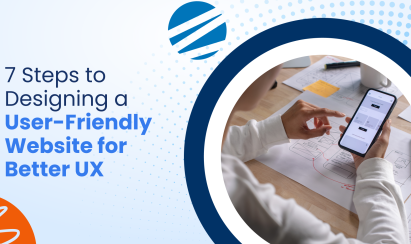Are you the proud owner of a website that has yet to make the transition to the mobile era?
Now is the time to ensure your website is mobile optimized to keep up with today’s rapidly growing digital landscape.
A mobile-optimized website is a tool for businesses to increase traffic and engage with their audience on any device. With the right strategy, your website can stand out on any mobile device, delivering a seamless experience for users.
What Is a Mobile-Optimized Website
A mobile-optimized website is a website designed with mobile devices, such as phones and tablets, in mind.
It accounts for factors like device size and resolution, including load times after constructing layouts and elements. This creates a website that looks great, loads quickly and works seamlessly on any device.
A mobile-optimized website is the way of the future to help organizations stand out from the competition. By providing an excellent user experience for their visitors, whatever device they are using.
Brief History
As technology has evolved, so have the expectations of web users. As handheld smartphones and tablets became popular, the need for websites to be optimized for mobile use became obvious.
The original versions of mobile-friendly sites were simplistic and lacked the necessary user-friendly elements to draw in engaged viewers. They need the powerful visuals and interactive features necessary to keep them engaged. As a result, many users found themselves frustrated and opted to abandon the mobile version of the website altogether.
But thanks to the continual improvements in web development technology. It all changed when Google began taking into account user experience when ranking websites. Thus, the demand for mobile-optimized websites has become increasingly important.
The rise of mobile-optimized websites and mobile friendliness was an absolute game-changer. Web developers and designers began focusing further and further on creating sites that were specifically tailored to mobile device users.
 Mobile-friendly vs Mobile-optimized
Mobile-friendly vs Mobile-optimized
Mobile-friendly websites are the minimum requirement for any site that wants to be ready for mobile users. They are designed to be easily viewed on a variety of screen sizes and offer basic navigation.
On the other hand, mobile-optimized websites take this a step further. It provides a more seamless experience for users across a variety of devices. The design is tailored to specific device needs. The content is organized and even includes mobile-exclusive features not found in its full-sized counterpart.
Whether you need a mobile-friendly site or a mobile-optimized experience, ensure your website is ready for the mobile revolution.
Best Practices for the Mobile Optimization of a Website
When it comes to mobile website optimization, best practices are key.
More people nowadays are relying on their phones for daily activities such as looking for the best trips to Europe and optimizing websites for mobile devices has become essential. Here are the best practices for mobile optimization of websites you should know about:
1. Use responsive themes and plugins
The use of responsive themes and plugins is essential to guarantee that your website is prepared for mobile use.
Your website will look great on screens of all sizes and aspect ratios if you use responsive themes and plugins. As a result, users who access your website on their phones and desktops will have the same user experience.
2. Use the platforms recommended image sizes and resolution
Use the platform’s suggested image sizes and resolutions to deliver a clear and crisp visual experience on any device.
To balance image clarity, user experience and page speed, images must be of the proper size and resolution. The image size can vary depending on the platform. Hence, it’s important to know the dimensions recommended for each platform.
For instance, mobile-optimized websites like WordPress recommend using images up to 1024 px by 1024 px in size. The majority of WordPress themes have comprehensive documentation that enables users to determine the ideal image sizes for the theme.
3. Check the core web vitals of your website
Checking the core web vitals of your website is essential for website performance analysis and optimization.
Per Google, these metrics are a set of “real-world, user-centric metrics that quantify key aspects of the user experience.”
Such metrics measure aspects of web vitality. These include the loading performance, interactivity and visual stability of your website for optimal user experience. Google Search Console provides a Core Web Vitals report that measures and monitors the performance of your website.
4. Take note of the “above the fold” section
“Above the Fold” is a term for the content of a website visible when it’s loaded in a browser.
It is especially important for mobile-optimized websites, as mobile users are likely to only scroll a short distance.
To maximize the effectiveness of your mobile website, it is important to have the most important information at the top. These are the call-to-action buttons and offers that are visible above the fold. This ensures that mobile users can interact with your website without having to scroll down.
5. Consider “code” rather than “images everywhere”
When building a mobile-optimized website, it is increasingly important to consider “code” rather than “images everywhere.”
This approach reduces the amount of data that needs to be transferred when users view a website. It helps to create a faster and more efficient user experience. Images can significantly slow down the loading of a webpage.
Which makes code-heavy websites with fewer images quicker to load. Code also promotes efficient website development. It’s easier to make changes to a page quickly using code rather than having to adjust images manually.
 6. Verify your website using several display and operating systems
6. Verify your website using several display and operating systems
Testing your website across various displays and operating systems gives you the opportunity to identify any potential issues. It will give you the opportunity to correct them before they become a problem for users.
By doing this, your website will run smoothly and offer the best user experience possible across all devices. This can ultimately increase customer satisfaction, engagement and conversions.
7. Consider your pop-up designs
Take into consideration the purpose of the pop-up.
Is it for promotional purposes, notification, or something else? Think about what users expect from the experience and design the pop-up accordingly. It should be discreet yet eye-catching; be disruptive without being overly intrusive.
When designing a pop-up for mobile-optimized websites, it’s important to keep the user experience in mind. Pop-ups should be optimized for mobile screens, with a simplistic user interface and minimal intrusion.
8. Utilize web host Schema.Org for structured data
Using Schema.org to optimize your mobile website is a great way to add valuable information to your website. Additionally, it will make it possible for search engines and other web applications to understand the page’s content.
Schema.org is a collection of structured data markup tags that accurately describes the content of your mobile website. To take advantage of these standards, you’ll need to add the appropriate tags and markup to your website’s HTML. Doing so will help search engines and other web applications categorize and understand the content on your website.
9. Improve the overall size and dimension of the Page
There are actions you can take to enhance the size and dimension of the page on a mobile-optimized website.
First, consider the size of the images on the page in relation to the resolution of mobile devices. This is because images can quickly take up significant amounts of space.
Second, employ a responsive design to guarantee that the page can support a variety of device sizes and orientations.
Finally, don’t waste valuable space. Look over any extraneous material on the page and try to remove it. Remember that too much information will make the website look overwhelming and messy.
10. Choose good web hosting services
Having a reliable web hosting service is essential for any website, especially a mobile-optimized one.
Web hosting companies provide the platform for your website. Without a good web hosting service, your website won’t be able to perform optimally.
When choosing a web hosting service for your mobile-optimized website, there are several factors to consider.
Make sure the web hosting has good uptime. Uptime is the period of time when your website is online and available to visitors. If your web hosting provider has poor uptime, your website won’t be accessible for long periods of time. As a result, this can be damaging to your business.
Moreover, ensure that the web hosting service has good customer service. If you run into any issues with your hosting, you’ll want to be able to contact a knowledgeable representative. Find someone who can help you troubleshoot and resolve the problem quickly.
Why Should Your Website Be Optimized for Mobile?
Having a website optimized for mobile is no longer a “nice to have” – it’s a necessity.
Mobile usage is growing each day, with millions of people using their smartphones and devices to surf the web.
As such, it’s important for businesses to make sure their website is optimized for mobile. By doing so, you can stay ahead of the competition, maximize their visibility and drive more traffic and sales.
Regarding the benefits, here are more reasons why your website should be optimized:
- It enhances user experience and Interface (UX/UI)
- Improves Page loading performance
- Boost User Engagement
- Increases Dwell time
- Helps improve SEO
- And more!
The best practices for a mobile-optimized website should now feel familiar to you. But what should you do next?
Our team at Business Marketing Engine steps in to help with that.
We offer full-service marketing plans to enable you to reach your potential and realize your aspirations. Every day, we work to make sure businesses like yours are successful.
Get in touch with us to discuss how the tools mentioned above can help you achieve your goals!

 Mobile-friendly vs Mobile-optimized
Mobile-friendly vs Mobile-optimized 6. Verify your website using several display and operating systems
6. Verify your website using several display and operating systems



